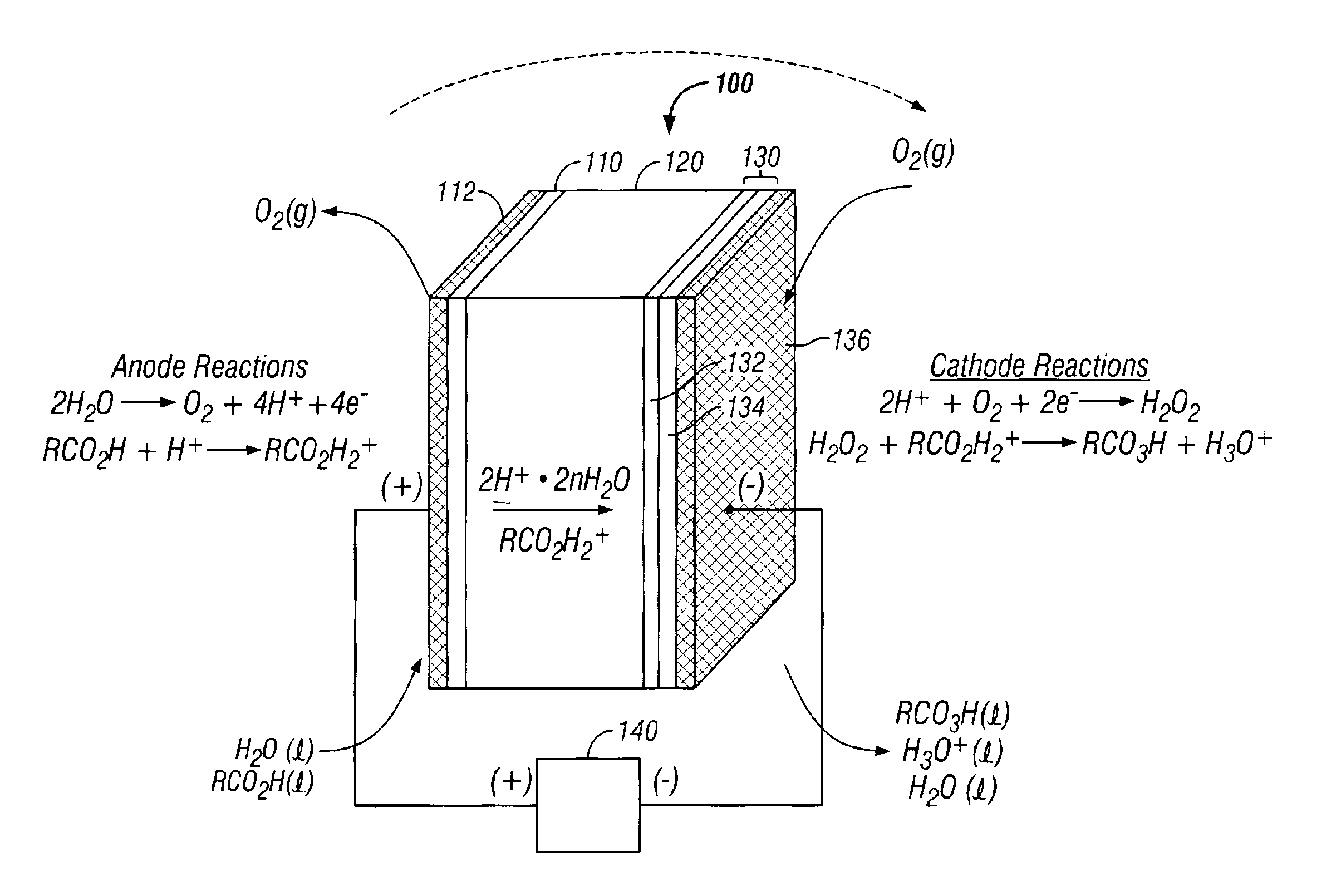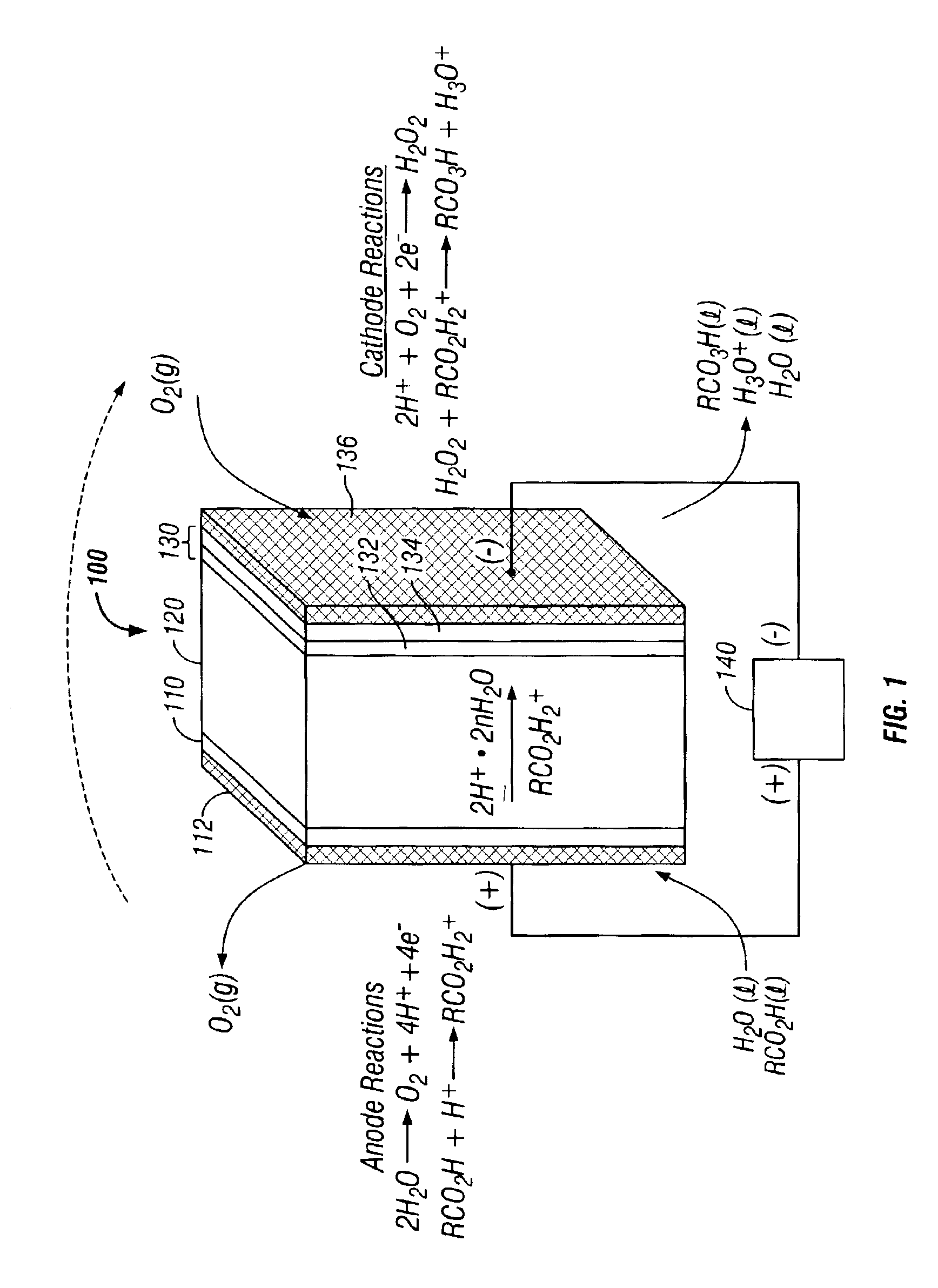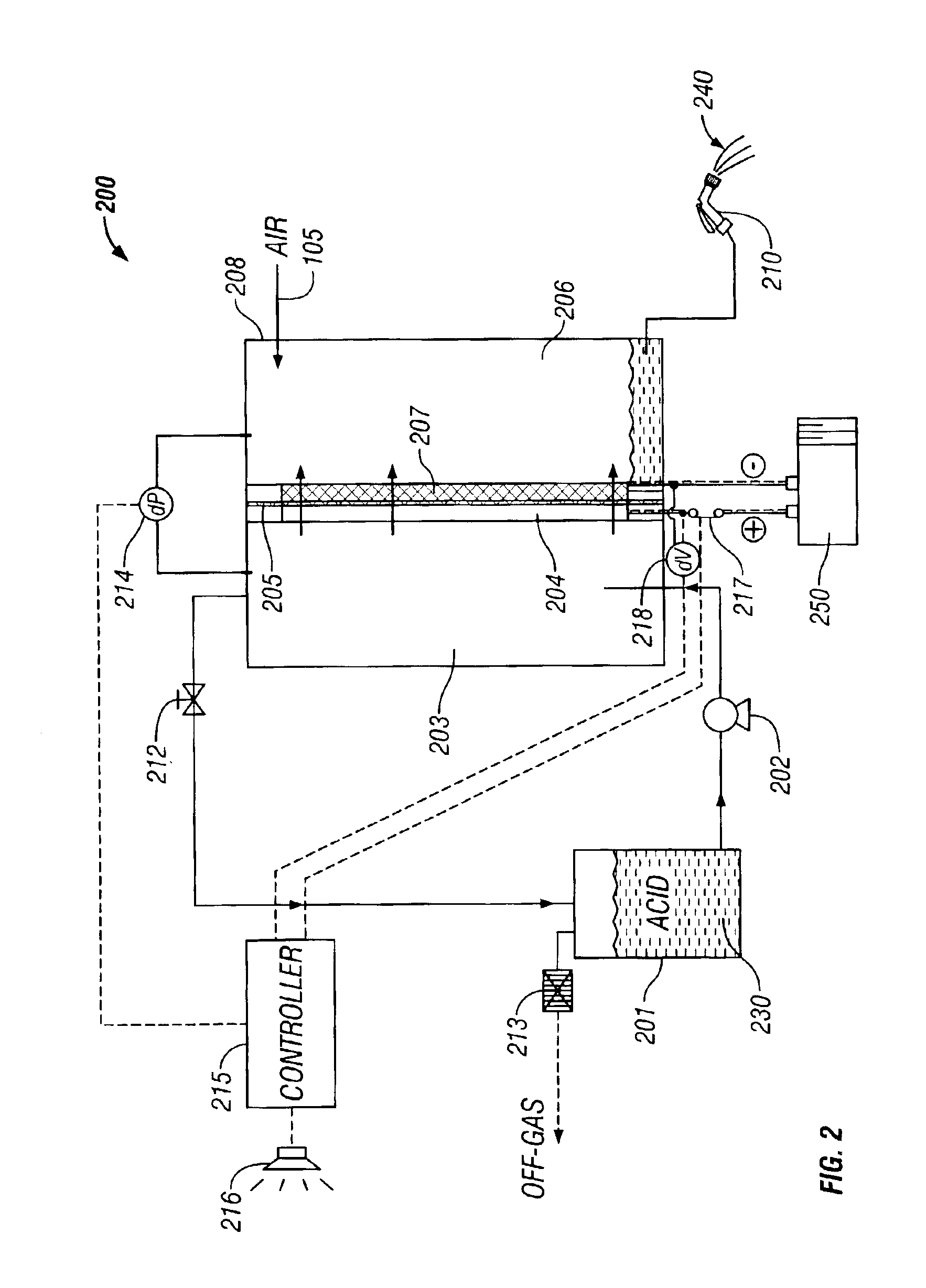Electrochemical method for preparing peroxy acids
- Summary
- Abstract
- Description
- Claims
- Application Information
AI Technical Summary
Problems solved by technology
Method used
Image
Examples
example 1
[0090]A peracid generator was designed and fabricated using components installed in a “plate-and-frame” type arrangement in accordance with FIG. 3. A single electrochemical cell having dimensions of 3 in.×3 in.×1 in. was assembled with seven components: (1) a titanium end plate; (2) a PTFE gasket (anode side); (3) a porous titanium plate coated with anodic catalyst; (4) a solid electrolyte (proton exchange membrane); (5) a gas diffusion electrode coated with a cathodic catalyst formulation; (6) a PTFE gasket (cathode side); and (7) a titanium end plate.
[0091]The proton exchange membrane was constructed from a 5 inch×5 inch sheet of NAFION®117 (manufactured by DuPont).
[0092]The anode substrate was a 0.065 inch thick porous titanium frit (Astromet Ti-ASTM B265) having a pore size of 25-40 microns. Ruthenium dioxide and iridium dioxide mixture (RuIrOx) deposited on the titanium frit provided an effective surface area of approximately 25 cm2.
[0093]The cathode consisted of a carbon cloth...
example 2
[0096]A peracid generator was designed and fabricated substantially in accordance with the configuration and materials described in Example 1. The only difference from the peracid generator of Example 1 was that the cathodic catalyst ink did not contain any cobalt tetrakis (4-methoxyohenoil) porphyrin (CoTMPP). Rather, carbon served as the only catalyst in the ink. Otherwise, the ink was prepared, applied, and cured in the same manner as in Example 1.
[0097]The types of carbon materials used may have difference surface densities. For example, an ungraphitized carbon (Vulcan-XCR72R, Cabot) was found to have a surface area of 210 square meters / gram. After graphitizing, this same carbon was found to have a surface area density of 86 square meters / gram. By contrast, a carbon powder was obtained by crushing carbon beads (Carbon Pearls 2000, Cabot), wherein the carbon powder has a surface area density of 1475 square meters / gram.
[0098]In two separate runs, the anode compartment was fed firs...
PUM
| Property | Measurement | Unit |
|---|---|---|
| Surface area | aaaaa | aaaaa |
| Surface area | aaaaa | aaaaa |
| Surface area | aaaaa | aaaaa |
Abstract
Description
Claims
Application Information
 Login to view more
Login to view more - R&D Engineer
- R&D Manager
- IP Professional
- Industry Leading Data Capabilities
- Powerful AI technology
- Patent DNA Extraction
Browse by: Latest US Patents, China's latest patents, Technical Efficacy Thesaurus, Application Domain, Technology Topic.
© 2024 PatSnap. All rights reserved.Legal|Privacy policy|Modern Slavery Act Transparency Statement|Sitemap



